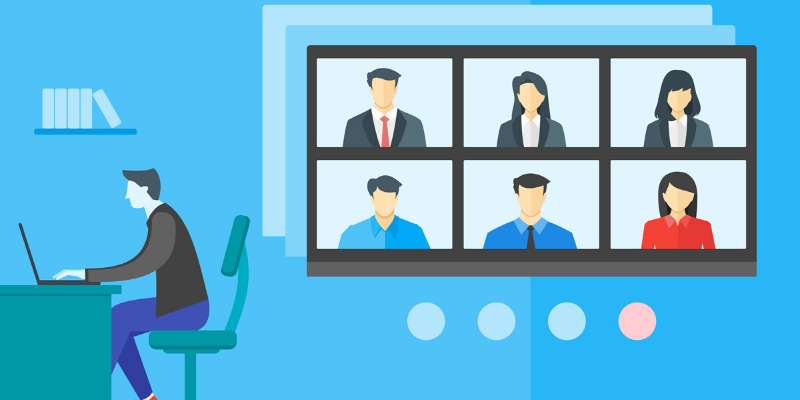While working from home has been a sought-after perk for some employees, we have entered a new reality of frequent online meetings and an inability to disconnect from the job, which has created a new stressor, known as communication fatigue. With the coronavirus pandemic, companies across the globe opted for the work from home model to ensure the safety of their employees, and to follow the social distancing guidelines.
As time went by, several organisations realised the benefits that work-from-home provides both for businesses as well as their employees. Many large organisations such as Facebook are considering permanent work from home policy for their employees. Twitter has already implemented work-from-home measures during the lockdown and declared it a success.
In this context, the concept of ‘workplace burnout’ has taken an all-new meaning, with employees having to deal with virtual communication fatigue. Today, with the array of communication and conferencing platforms available, employees are continuously connected virtually with their colleagues, seniors, clients and more.
This communication overload is resulting in employees feeling drained at the end of the day with virtual communication fatigue being one of the most talked-about topics today.

With this perspective in mind, below are four ways to identify and prevent virtual communication fatigue:
1. Virtual time off
As the work-from-home trend continues, many people within the workforce are noticing the blurred lines between work and home since they both are part of the same space today. It can be tempting for employees to schedule back-to-back meetings to get through the day quicker, but doing so can cause signs of fatigue to appear earlier than expected. While most of us take the support of caffeine to look and sound fresh, it can only do so much when up against consistent virtual meetings.
To combat virtual communication fatigue that comes with a busy virtual meeting schedule, the cure is as simple as scheduling breaks during the day.
Taking breaks at regular intervals will help you to recharge before the next call appointment and allow for extra planning so the next interaction goes as effortlessly as the last one. And your break doesn’t have to involve sitting at your home workstation. An effective break should include moving around to get your blood flowing and introduce a change of scenery. Talk to your family members, quickly whip up a salad or just take a power nap.
2. Set a deadline and create an itinerary for every video call
We’ve all been there before: one co-worker begins the meeting by asking how everyone is doing, what’s their current favourite thing to do and before you know it, half an hour is gone by without any discussion of the true topic at hand. As much as everyone loves to hear all about each other’s lockdown life; too much talk can cause meetings to go longer than planned.
To prevent this, create an itinerary ahead of time. By scheduling minutes and other talking points, your meetings will run effortlessly while also limiting everyone’s virtual time to prevent communication fatigue.
3. Block your front camera view
One of the biggest contributors to video call fatigue is keeping the self-view feature open during meetings – no matter how wonderful your look turned out. As humans, we’re not used to staring at ourselves constantly. Regardless of how you feel about your quarantine look, self-view induces a feeling of anxiety; worried about how we look, sound, or what’s going on with the lighting and background.
To prevent any sort of communication fatigue from view yourself, simply turn off the camera feature whenever you’re not presenting or not expected to talk. If you’re worried about how you’ll look on camera, open up your camera app before a meeting to make any last-minute adjustments, test the lighting, or make a quick location change. If closing the self-view isn’t possible on the platform you’re using, you can block it off by taping a piece of paper.
4. Notification fatigue
Notification overload can have unfavourable effects on effective decision-making and collaboration of employees. Employees must not necessarily be expected to respond to all the messages they receive each day until and unless it’s extremely important.
On the other hand, for managers, they can set up a general rule that quick questions are posed via messenger, but bigger issues that require more thinking/strategising time are sent via email. Set timelines so that people know when a response is needed and follow up on critical questions after a set amount of time.
In today’s world, when we are always online, it becomes difficult for employees to switch off even for a short period due to the fear of missing out on something important. In this situation, by following the above tips, one can ensure that they are able to balance their time while also making time for leisure activities, so as to prevent and counter virtual communication fatigue.
(Edited by Kanishk Singh)
(Disclaimer: The views and opinions expressed in this article are those of the author and do not necessarily reflect the views of YourStory.)
Want to make your startup journey smooth? YS Education brings a comprehensive Funding Course, where you also get a chance to pitch your business plan to top investors. Click here to know more.
Link : https://yourstory.com/2020/06/ways-prevent-virtual-communication-fatigue-work-home
Author :- Bhavin Turakhia ( )
June 16, 2020 at 11:05AM
YourStory

